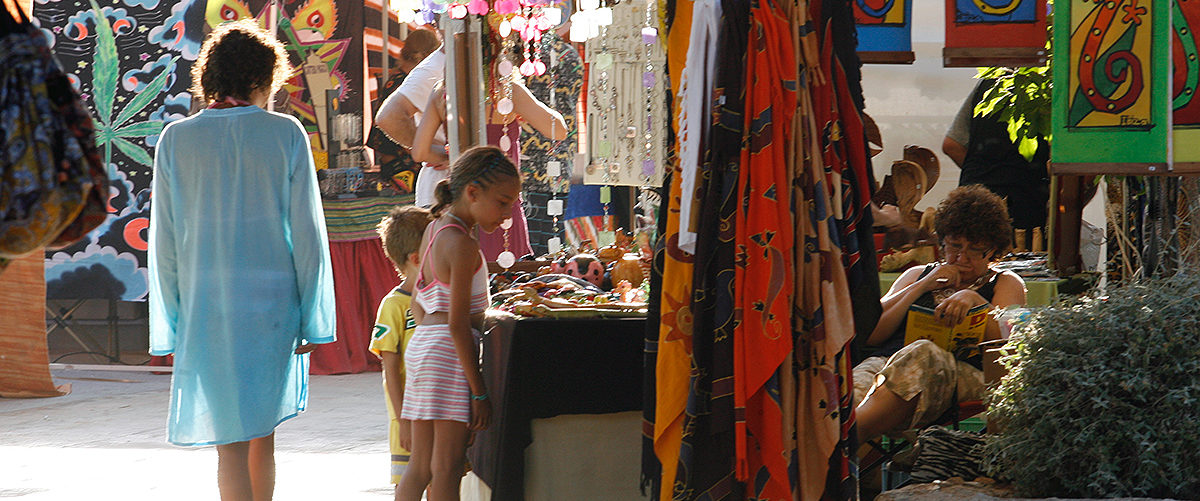The quiet island
Culture: Ibiza the hippie island
Up until the sixties, Ibiza had been a quiet island. Its inhabitants had a reserved character and jealously guarded their traditions. They were beginning to come to terms with the fact that the tourists that were slowly starting to arrive, attracted by this paradise, were also making changes to their ways, as well as to the infrastructure of the island. They accepted these changes, as they in turn brought them an economic well-being they had never known before.
The arrival of the hippies, those “peluts”, meaning long-haired, who were satisfied with very little, dressed funny, could live just anywhere, founded communes where everybody shared everything with everyone, and attached little importance to material things, was totally different
from anything the Ibizans had ever seen. The locals watched the strange scene more or less from a distance, respecting the newcomers’ way of looking at the world.
But at the same time, those peluts produced big changes in the habits and the economy of the locals, since the tourists, who felt most curious about them, started to come more and more, wanting to see for themselves who they were and where they lived.
Most of the hippy communes clustered around the small village of Sant Carles de Peralta, especially in the village square, just outside the church, where they gathered every Saturday to exchange handicrafts and what few provisions they needed for a living.
Quickly these meetings drew the attention of both residents and tourists, and soon this trade became the hippy market. Any time of day you could see the hippies in Bar Ca n’Anneta, where
Anita treated them sometimes like a mother, other times as a friend. Because of the increase in the number of craftsmen and visitors, in 1973 the hippy market had to be moved to a more spacious venue, for which reason it has been held at Punta Arabí every summer until today.
Aguas Blancas was their favourite beach
Aguas Blancas became a nudist beach where the hippies played their music and danced, and on full moon nights went to watch the moon rise. Over the years they gradually 0moved to Benirras beach, and changed the moonrise for the sunset, which they contemplated to the sound of tambourines and drumbeats.
But the hippies were not just in San Carlos. You could find them in many other places of the island. They loved the San Miguel area, especially Bar Ca’n Sort, where they held exhibitions and cultural meetings, often offering outsiders the chance to try their macrobiotic food.
Another of their favourite haunts was Atlantis, near the beach of Cala D’Hort, where the natural pools, as much as a natural cave in the rocks, gave their imagination free play. They turned the area into a place of worship for Buddha, painting images on the walls.
The area comprises the Pirate’s Tower (Torre des Savinar), with stunning views of magical Es Vedrá.
Market
The hippy movement slowly fizzled out with time, as people began to forget all about the Vietnam War, which had originally given ground to the displacement of so many in the so-called developed countries.
What is left today is a trend, a particular dressing style, and a way of living outside conventional norm. There are still many craftsmen selling their own products at the market, but many find their wares elsewhere. Apart from the Punta Arabí market, the largest one, there are several others, of which Las Dalias, in the garden of a restaurant in San Carlos, is without a doubt the most interesting. Every Saturday of the year, numerous craftsmen sell their products, as well as others which they procure from far-away countries in the winter: jewellery, clothes, decorative objects, etc.



